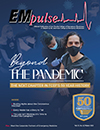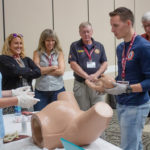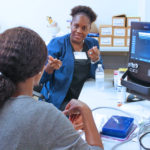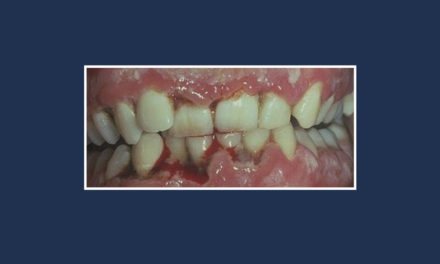Fun & Games: Using Gamification to Engage Multi-generational Learners
Many factors can influence the effectiveness of medical education. Learners respond to educational strategies differently, and there is a generational dimension as to how these strategies are delivered and received. A generation is defined by a set period in which, despite their geographical location, they share common experiences, defining world history events and similar social traits. Each generation has distinctive teaching and learning styles (see below), and thoughtful consideration of each generation’s preferred learning style empowers educators, helping them understand how to appeal and motivate their learners.
The Generations:
Baby Boomers
born from 1946-1964
Educationally like contact with faculty through lectures, detailed handouts based on the lectures, and note-taking to apply subject matter into real-life experiences. This generation thrives in caring learning environments with positive reinforcement.
Generation X
born from 1965-1981
This generation prefers to learn on their terms, usually quickly and efficiently and likely through distance-learning or preprogrammed courses that allow the learner to work at their own pace and on their own time.
Millennials (Generation Y)
born from 1982-1996
They grew up with technology and want to integrate it into the learning environment. They are goal-oriented, multi-taskers by nature, collaborative and enjoy experiential learning activities. They seek to learn from their mistakes immediately; therefore, simulations and game-styled learning suit them best. [1]
Generation Z
born from 1997-2009
The newest generation of learners that have entered medical education. They like their learning experiences to be customizable to their personal needs, in which they pick and choose the best time, place, and resources for them to learn. They enjoy hands-on experience and on-the-job learning with on-demand educational resources and feedback. Active learning through flipped classrooms, problem-based learning, simulation, and gaming is hugely beneficial. [2]
Next generation:
Generation Alpha
born from 2010-2025
As Millennials and Generation Z become the most dominant type of learners, medical education must adapt by incorporating active learning styles with immediate feedback. While games have been used to facilitate learning for decades, gamification is one of the hottest trends in medical education, likely due to the increasing number of Millennial learners. [3] Gamification refers to applying game design elements to a non-gaming topic, using concepts like badges, levels, leaderboards, and limited time and resources to create a narrative. This style appeals to both Millennial and Generation Z learners, and is a natural teaching approach for Generation X educators. Gamification encourages a positive learning environment, creates motivation, improves engagement and retention, gives learners control over the material, and delivers effective immediate feedback.
Gamification’s strengths and potential weaknesses can be attributed to the self-determination learning (SDL) theory. SDL is a theory of human motivation and personality that defines a person’s inherent growth tendencies and innate psychological needs of competence, autonomy, and relatedness. A learner’s competence is related to their ability to achieve a goal. Goals help create a positive and linear relationship with a specific process or outcome, motivating learners and providing essential feedback. Creating visual goals helps motivate and remind learners of their achievement and progress. Learner autonomy allows the learner to choose how they desire to learn. Participation in gamification meets that psychological need. Relatedness refers to how learners are interconnected to others and the content, and is closely linked with intrinsic and extrinsic motivation. Relatedness can help promote the use of teams and collaborative learning communities, as well as autonomy through user interfaces. Motivational challenges that engage peer-to-peer comparisons and social aspects can be used to incentivize the learners.
Gamification also poses some challenges, such as overjustification and the inherent negative effects of competition. Overjustification is the net negative effect on engagement and motivation from an overreliance on external incentives, such as prizes. This can have a negative impact on a learner’s autonomy, which can create disengagement. Competition can have negative effects on learners as it also can affect competence, especially when their abilities are publicly displayed and there are social implications. [4]
Gamification can be incorporated into medical education in many ways, from educational content to interpersonal communication skills. Educators can turn mandatory tasks and assignments into quests to help them gain stars, points, badges, or coins that will be cumulative during different stages. This strategy will increase motivation and give learners a sense of accomplishment. The use of team-building games will reinforce knowledge, foster collaboration, and improve interpersonal and communication skills. Some examples are adopting well-known television games such as Jeopardy and Family Feud, or puzzle-solving games such as “Escape Rooms,” where learners must cooperatively find clues and solve puzzles to accomplish a goal. The increased use of technology and the number of online learning platforms has also facilitated and increased the use of gamification in medical education (like Kahoot, Quizlet, and Airway Ex.).
It is important to remember that even though gamification is an exciting way to deliver content and engage learners, it must be used strategically. Educators should limit the incorporation of gamification elements to prevent learners from getting distracted. [5] Gamification makes learning fun and experiential for learners. But it will also improve motivation and engagement by adding a degree of competition when used in a collaborative, positive, and supportive learning environment. ■
References
- Johnson SA, Romanello ML. Generational diversity: teaching and learning approaches. Nurse Educ. 2005. doi:10.1097/00006223-200509000-00009
- Eckleberry-Hunt J, Lick D, Hunt R. Is Medical Education Ready for Generation Z? J Grad Med Educ. 2018. doi:10.4300/JGME-D-18-00466.1
- Boysen PG, Daste L, Northern T. Multigenerational challenges and the future of graduate medical education. Ochsner J. 2016.
- Rutledge C, Walsh CM, Swinger N, et al. Gamification in action: Theoretical and practical considerations for medical educators. Acad Med. 2018. doi:10.1097/ACM.0000000000002183
- Singhal S, Hough J, Cripps D. Twelve tips for incorporating gamification into medical education. MedEdPublish. 2019. doi:10.15694/mep.2019.000216.1
- The Annie E. Casey Foundation. “What is Generation Alpha?” Nov. 4, 2020. aecf.org/blog/what-is-generation-alpha/
This article is part of the following sections:












